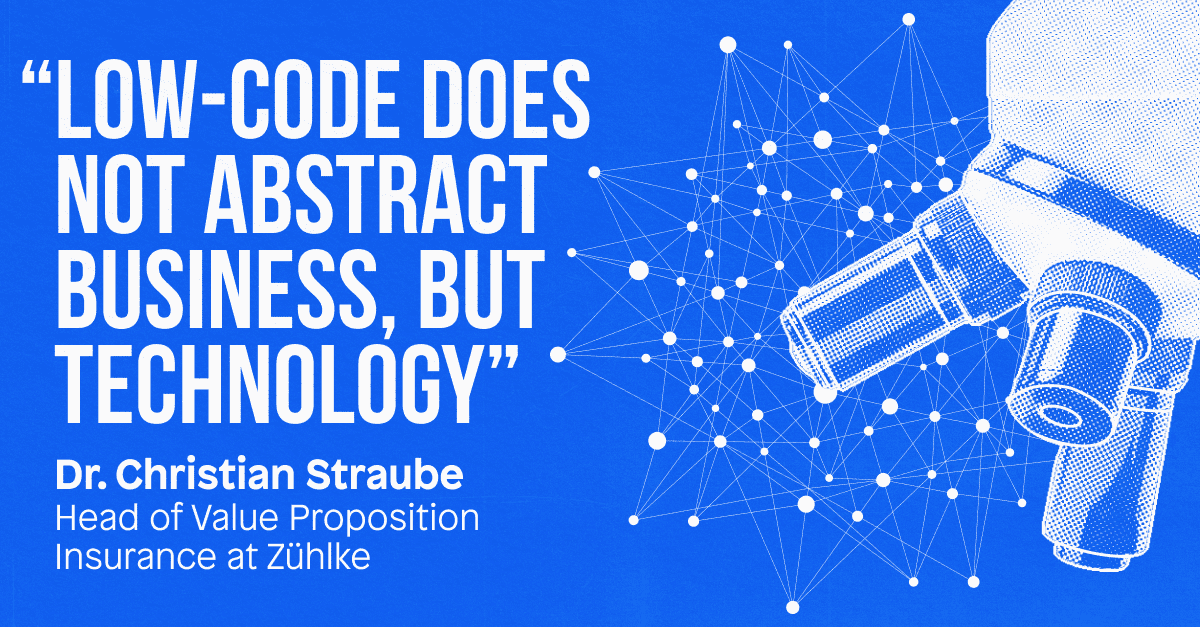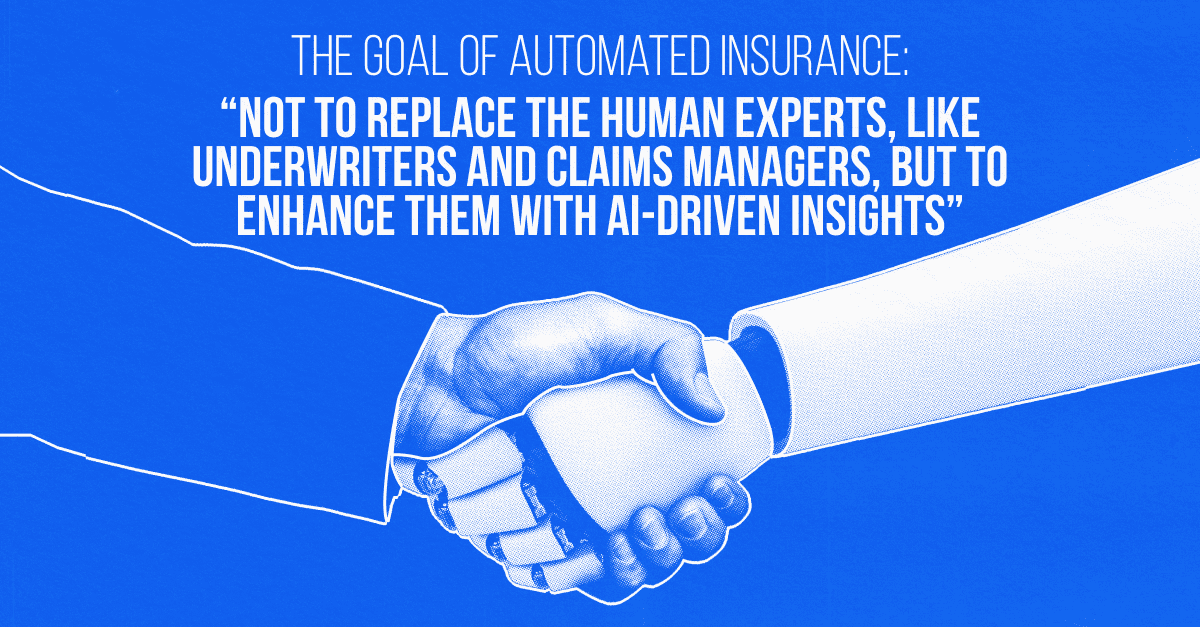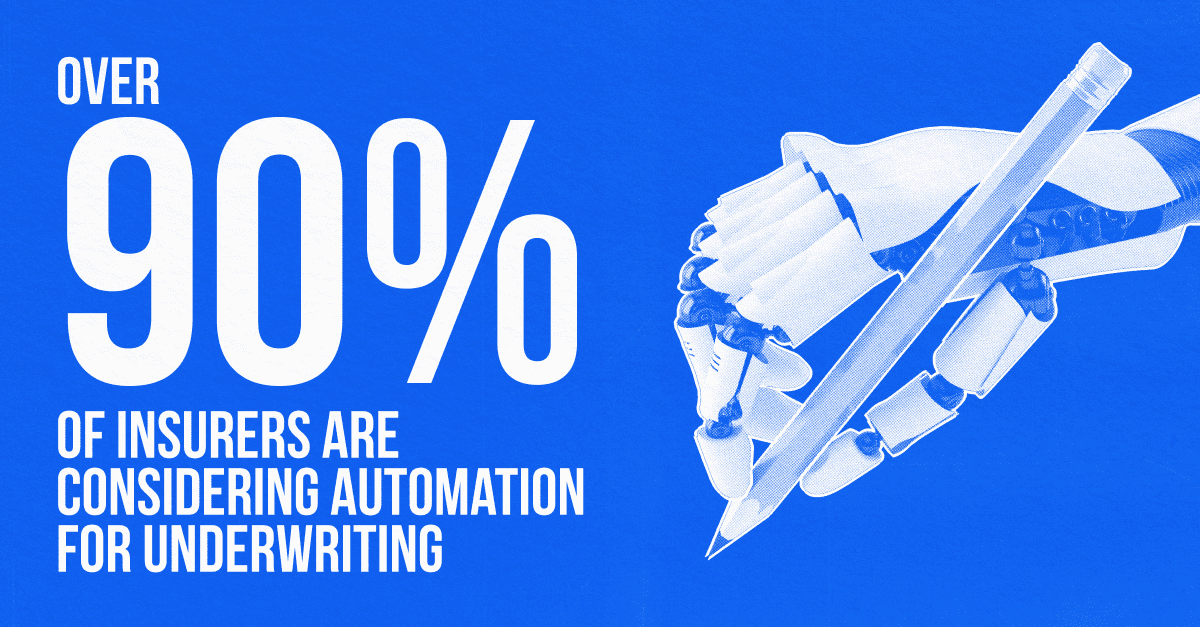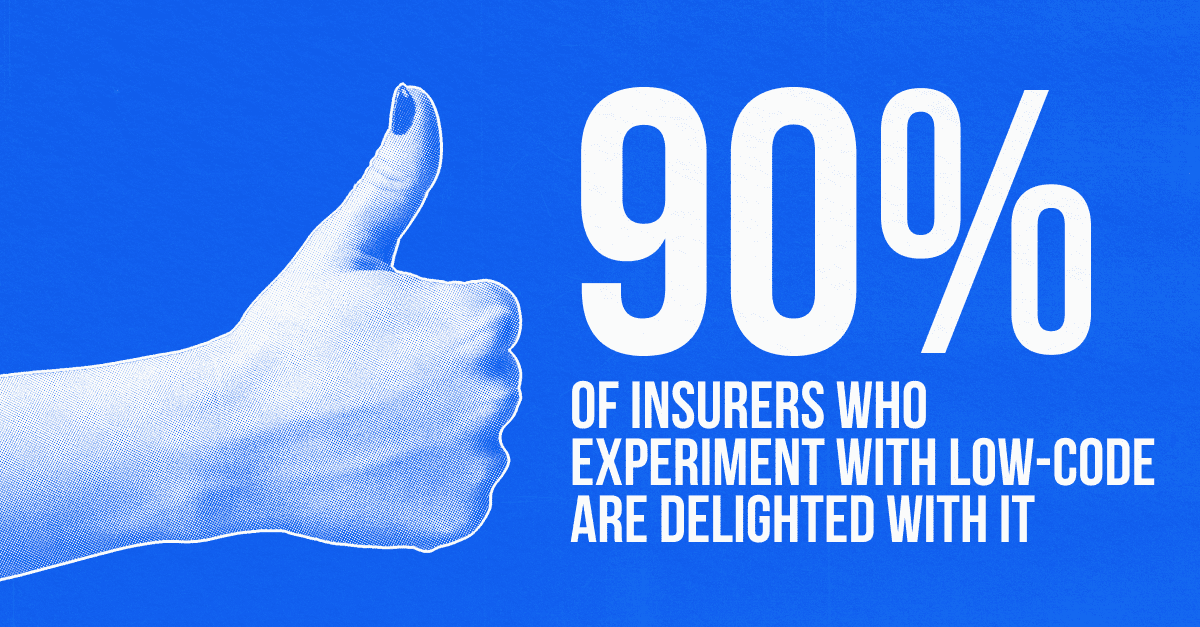Low-Code and Insurance Automation Create a “New Paradigm,” According to Zühlke

“Low-code does not abstract business but technology,” says Dr. Christian Straube, Head of Value Proposition Insurance at Zühlke, a global innovation service provider and Mendix partner. In other words, low-code puts what you want to achieve in terms of business value into focus and detail, while the digital tools to build your products and services become less complex and time-consuming. For insurers, a digital transformation with low-code ensures that you can prioritize claims-processing and other insurance workflows instead of being distracted with issues related to software or IT.
Learn why Zühlke believes insurers can become more competitive, purposeful, and efficient with low-code. This is a vital path for an industry that is grappling with significant challenges such as margin pressure, an ongoing war for talents, missing connectivity of core systems, and changing ESG regulations. Read on to hear more from Straube on the cutting edge of insurance transformation including automation in insurance claims.

Modernizing Insurance and InsurTech Trends
Zühlke recommends low-code to its insurance clients because low-code “enables a faster and more dynamic response to current trends and needs.”

Automation in insurance is among the hottest discussed approaches to tackle the above-mentioned industry trends. A company’s goal when automating insurance must be, as Straube explains, “not to replace the human experts, like underwriters and claims managers, but to enhance them with AI-driven insights.” Human insights remain crucial to the insurance industry. Ideal future tools in insurance underwriting will, Straube says, allow for “hyper-personalized underwriting UI so that every underwriter has exactly the tool he needs or she needs.”

Over 90% of insurers are considering automation for underwriting. Low-code helps insurers looking to integrate automation into their processes, including automated intake and automated claims processing. Straube also notes, low-code streamlines processes so that “underwriters can really focus on the main part of their demanding job.”
Unlock Potential with Low-Code
Insurers flourish with the Mendix platform according to Zühlke. “We have new players on the market,” Straube says, noting the emergence of quantum computing, generative AI, and other developments in this space. “Choosing the right technology mix for successful business-critical innovation projects, this is where Zühlke is very strong and here we can then leverage synergies with Mendix.”
Zühlke recently leveraged the Mendix platform while working with a major Swiss health insurer. The client aimed for a more efficient commercial quotation process. Collaborating closely with Zühlke—which guided the company to adopt Mendix—the application process began working to suit the needs of its users. “The project was a success,” says Straube. “In the end, we were able to dramatically increase efficiency—especially because the users got involved very early and participated throughout the whole development of the service.”
Insurers Seizing New Opportunities
Digital insurance solutions can range from app-based insurance companies to underwriting AI and other insurance automation software. This range of new developments, Straube sees as a positive development for the industry and an exciting challenge.
Many insurers “leave their comfort zone every day,” Straube says. These insurers seize new opportunities and transform their businesses with low-code inside and out. “In the end, it’s not only another tool, but it’s a new paradigm. There is change in organizational structures and culture and processes. And more and more insurers are open to this.”

Straube estimates about about 90% of insurers who experiment with low-code and embed it into their delivery process of digital value are delighted with it. The “abstraction” of technology, he discusses, means faster development of products and, “you can involve many more people and stakeholders into the process.”
